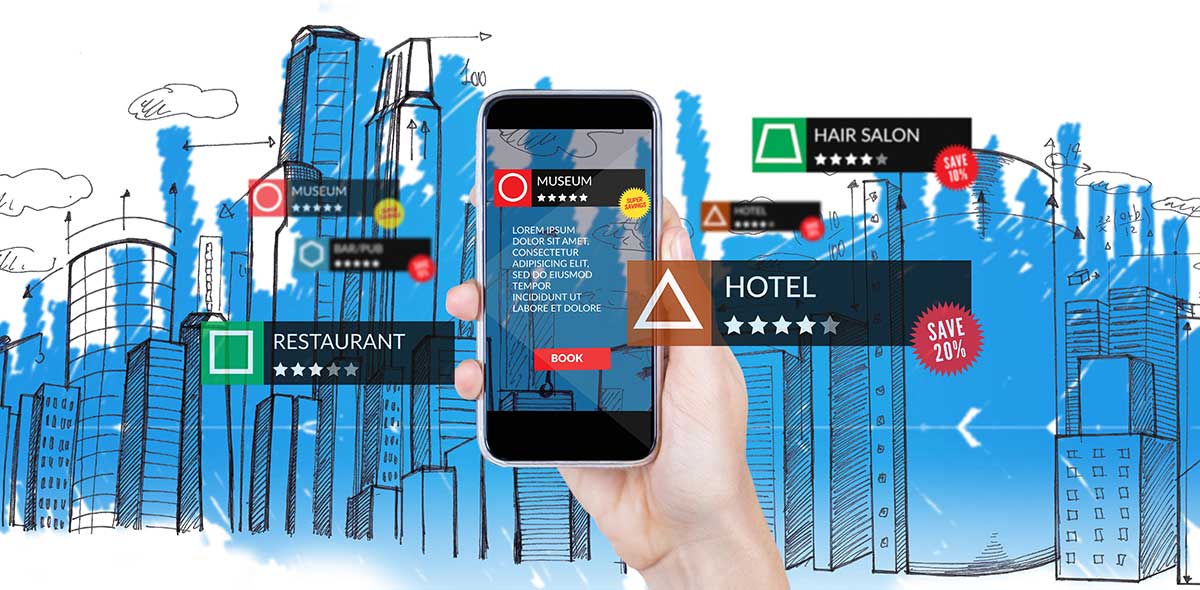The Basics Of Location-Based Marketing For Businesses
Location-based marketing allows businesses to target consumers based on their geographic location, delivering personalized promotions, ads, and content at the right time. By using technologies such as GPS, Wi-Fi, Bluetooth, and IP addresses, businesses can identify where their customers are and engage them with relevant messaging.
With mobile usage at an all-time high, consumers increasingly expect timely and relevant interactions from brands. Location-based marketing bridges the gap between the physical and digital world by delivering ads and promotions based on where a consumer is at any given moment. From a retail store offering a discount to nearby shoppers to a restaurant sending lunch specials to office workers within a specific radius, this strategy ensures businesses connect with customers when they are most likely to act.
How Location-Based Services Marketing Works
Businesses use location-based services marketing to track and engage consumers based on their real-time location or historical movements. When a user opts in to share their location via mobile apps, advertisers can deliver targeted promotions based on that data.
For example, a clothing store might track when a user enters a shopping mall and send them an exclusive discount via push notification. A fitness center could recognize when someone frequently visits a nearby health food store and serve them ads about special membership offers. This combination of real-world behavior and digital engagement makes location-based marketing one of the most effective advertising strategies today.
To make this possible, businesses rely on various location technologies such as geofencing, beacons, GPS tracking, and Wi-Fi positioning. These tools help marketers segment audiences based on proximity and create hyper-personalized campaigns that drive higher engagement and sales.
Types of Location-Targeted Advertising
- Geotargeting
Geotargeting is a method that allows businesses to deliver ads based on a user’s general location, such as city, state, or zip code. It works by tracking IP addresses or GPS data to determine where users are and serve them relevant content.
For instance, a local bakery in New York City could run an online campaign that only reaches users within a five-mile radius. A real estate agency could advertise open houses only to potential buyers in specific zip codes. By narrowing the focus to a relevant audience, businesses ensure their marketing efforts are more impactful.
- Geofencing
Geofencing involves creating a virtual perimeter around a specific location and delivering ads or notifications when users enter or exit that area. Retailers often use geofencing to attract customers from nearby stores by sending special offers in real-time.
For example, a fast-food chain could set up a geofence around a competitor’s restaurant and trigger an ad for a discount when customers enter that area. A car dealership could target people shopping at rival dealerships, offering them exclusive promotions to visit instead. The ability to engage potential customers exactly when they are near a business makes geofencing a powerful tool for increasing foot traffic.
Businesses looking to leverage search-based geofencing can explore professional geofencing services to refine their strategy and maximize ROI.
- Beacon Technology (Proximity Marketing)
Beacon technology uses Bluetooth-enabled devices placed in physical locations to send push notifications to nearby smartphones. Unlike geofencing, which covers a broader area, beacons work best for indoor locations such as malls, airports, or stadiums.
For instance, a department store could place beacons near high-traffic areas to notify shoppers about ongoing sales. A sports stadium could send in-seat food delivery offers to fans watching a game. Since beacons require users to have Bluetooth enabled and an app installed, they work best for businesses with dedicated mobile apps and a strong customer base.
- Geo-Conquesting
Geo-conquesting is a strategy that targets users near competitor locations to divert them toward a competing business. This technique helps brands capture potential customers who are already shopping for a similar product or service.
For example, a coffee shop could set up ads that activate when users visit a rival chain, offering them a free drink if they switch locations. A car rental company could target airport visitors who are browsing competitor rates, providing a better deal through mobile ads. Geo-conquesting allows businesses to win customers at the moment they are making a purchasing decision.
Benefits of Location-Based Marketing for Businesses
Location-based marketing provides businesses with a more targeted, cost-effective, and engaging way to reach consumers. Instead of wasting money on broad advertising campaigns, companies can deliver ads to high-intent customers already near their stores or actively searching for their services.
One major benefit is increased foot traffic. Businesses can send real-time promotions to users near their locations, encouraging them to stop by. A clothing store can promote a flash sale to shoppers walking past, while a restaurant can offer discounts to people looking for nearby dining options.
Another advantage is higher conversion rates. Since ads are based on real-world behavior, users are more likely to engage with them. Instead of displaying generic ads to a broad audience, location-based marketing ensures that promotions reach customers when they are ready to buy.
This strategy also enhances customer experience by providing useful and relevant information. A hotel can send location-based recommendations about nearby attractions, while an event organizer can deliver real-time updates to attendees. Personalized interactions like these make brands feel more customer-focused and helpful.
Implementing Location-Based Marketing for Your Business
To launch a successful location-based marketing campaign, businesses need to follow key steps:
Defining goals and understanding the audience is the first step. Businesses need to determine whether they want to increase store visits, boost online sales, or improve brand awareness. Identifying the right customer segments ensures the campaign reaches the most relevant audience.
Selecting the right technology is just as important. While retailers may benefit from affordable geofencing services, stadiums and shopping malls may find beacon technology more effective. Businesses need to choose the location-based marketing method that aligns with their industry and customer behaviors.
Developing engaging content is crucial. A well-crafted, timely offer can significantly boost engagement. A personalized discount, an exclusive deal, or a limited-time promotion can increase customer response rates and encourage immediate action.
Monitoring and optimizing performance ensures long-term success. Businesses should track key metrics like foot traffic, ad engagement, and conversions to determine what works and what needs improvement. Using data insights, they can fine-tune their strategies for better results.
Businesses that want to maximize location-based marketing efforts can explore proven geofencing strategies by GetGeofencing.
Take Your Location-Based Marketing to the Next Level
If you’re looking to unlock the full potential of geotargeting, geofencing, and location-based advertising, GetGeofencing is the go-to expert. Our services include search geofencing, event geofencing, and addressable geofencing, allowing businesses to reach high-intent customers efficiently.
With cutting-edge targeting technology, real-time analytics, and award-winning customer service, GetGeofencing helps brands reduce wasted ad spend and maximize ROI. Our 24/7 customer dashboard and weekly campaign optimizations ensure businesses achieve the best results.
Don’t miss the opportunity to engage customers at the right time and place. Contact GetGeofencing today to learn how location-based marketing can grow your business.


